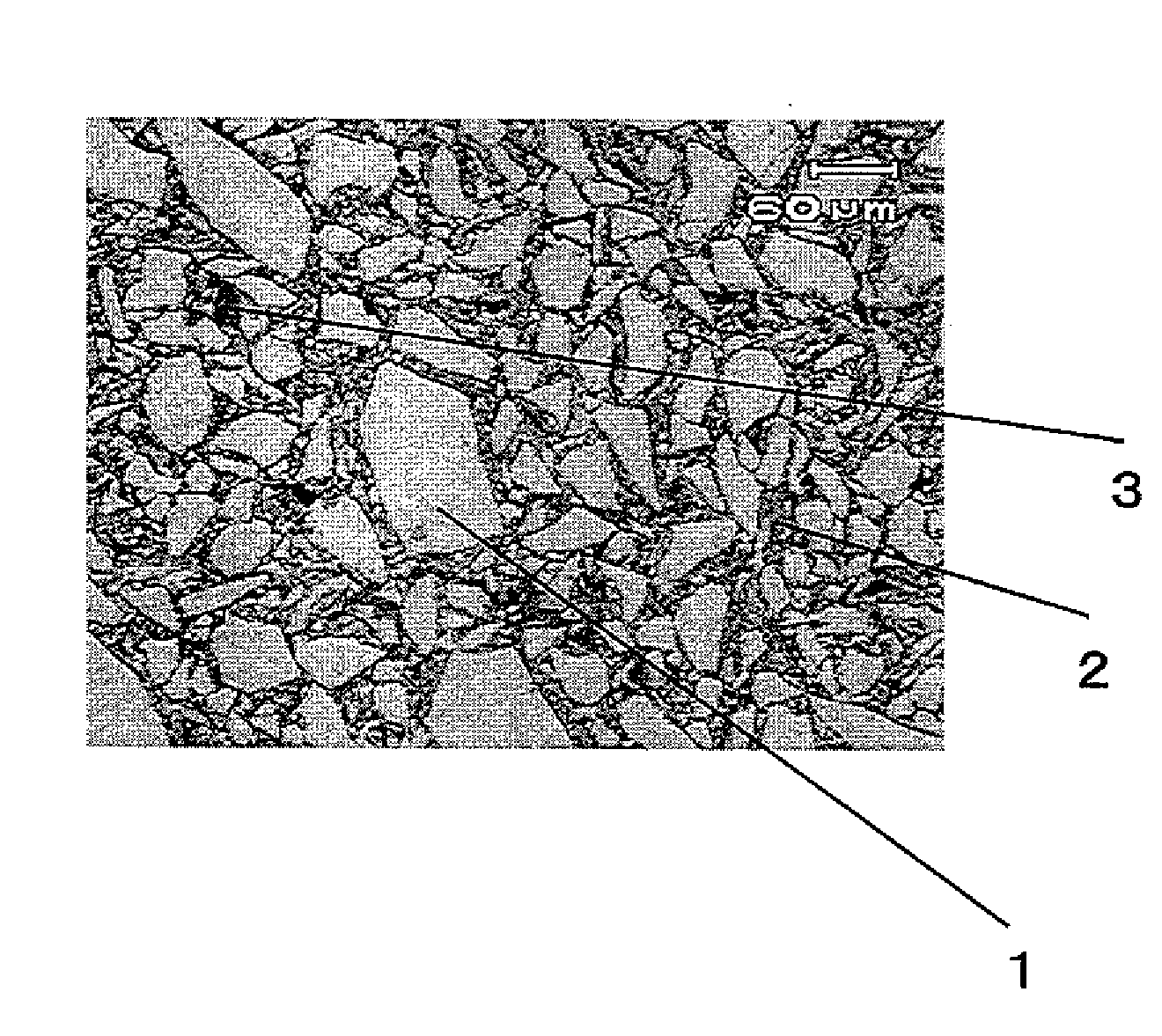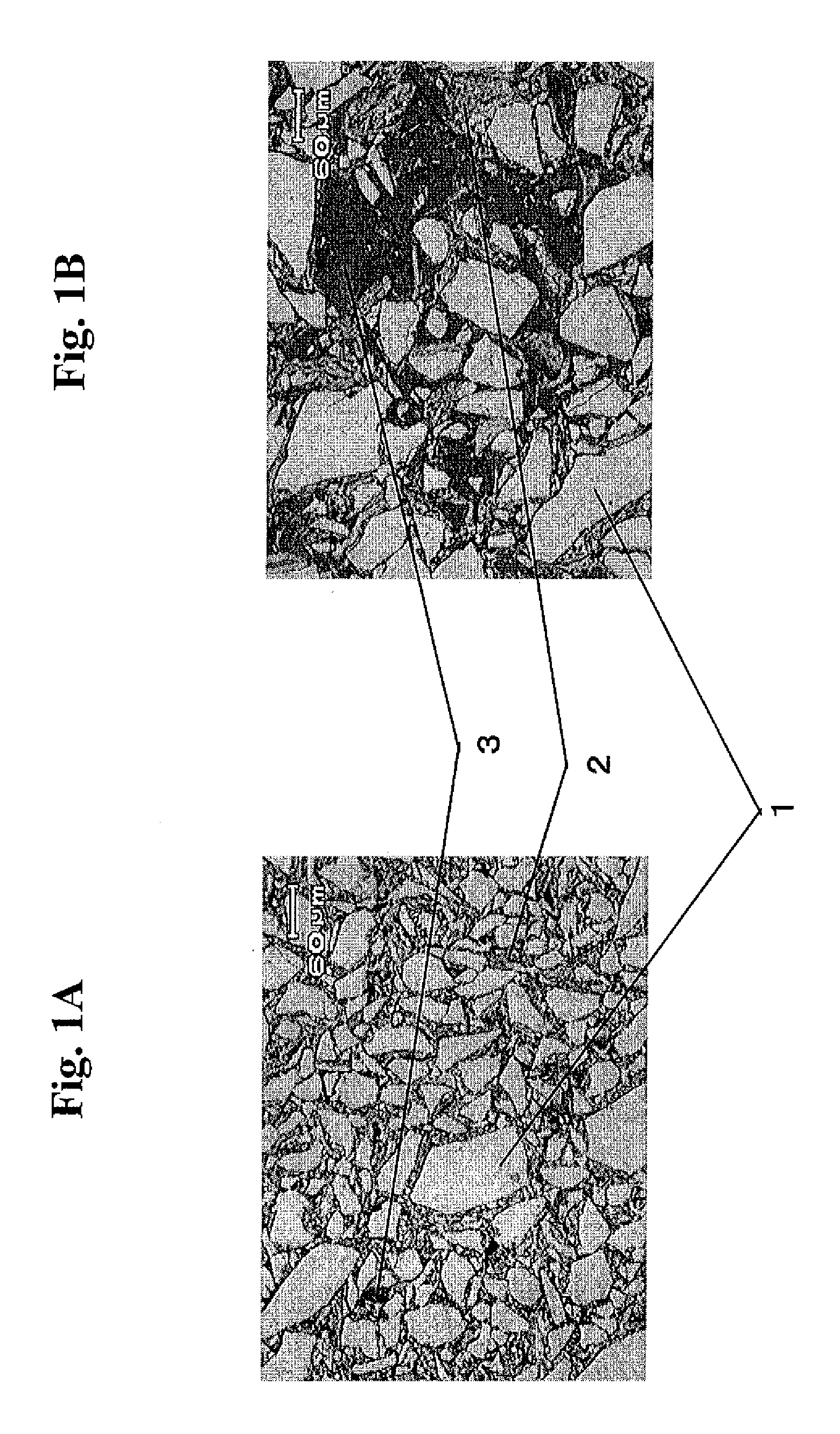Zirconia-carbon-containing refractory and method for producing same
- Summary
- Abstract
- Description
- Claims
- Application Information
AI Technical Summary
Benefits of technology
Problems solved by technology
Method used
Image
Examples
Example
Example B
[0131]Table 2 shows the quality of the zirconia-graphite materials containing various proportions of the graphite fine powder and carbon black having a diameter of 45 μm or less in the carbonaceous material excluding the bonding carbon.
[0132]In Comparative Examples 6 and 7 and Examples 8 to 11, the proportions of the carbonaceous material having a diameter of 45 μm or less in the carbonaceous material excluding the bonding carbon were changed from 0% to 100%. At each of the proportions of 0% and 35% in Comparative Examples 6 and 7, the total volume percent of the apparent porosity and the carbonaceous material was 43% or more. The corrosion resistance was reduced. In contrast, at each of the proportions of the graphite fine powder of 40%, 60%, and 100% in Examples 8 to 10, both corrosion resistance and thermal shock resistance were significantly improved and satisfactory. In Example 11, part of (10%) the graphite fine powder was replaced with carbon black. The structure wa...
Example
Example C
[0133]For zirconia-graphite materials having a ZrO2 content of 88% by mass so as to have improved corrosion resistance, in order to improve a reduction in wear resistance due to the increase in ZrO2 content, fine fibrous carbon structures were formed in the refractory matrix structures. Table 3 shows the results.
[0134]To form the fine fibrous carbon structures, a sol solution containing metallic Ni having a diameter of 30 nm was added in an amount of 0.2%, 0.5%, or 0.6% by mass in terms of metallic Ni. In Example 12 in which the Ni catalyst was not contained, the results demonstrated that although the corrosion resistance was satisfactory, the spall threshold temperature ΔT was 1,000° C., which was the lower limit. In each of Example 13 in which the amount of Ni added was 0.2% by mass and Example 14 in which Ni the amount of Ni added was 0.5% by mass, the corrosion resistance was satisfactory. Furthermore, the addition of the Ni catalyst improved the thermal shock resistanc...
PUM
| Property | Measurement | Unit |
|---|---|---|
| Length | aaaaa | aaaaa |
| Fraction | aaaaa | aaaaa |
| Fraction | aaaaa | aaaaa |
Abstract
Description
Claims
Application Information
 Login to view more
Login to view more - R&D Engineer
- R&D Manager
- IP Professional
- Industry Leading Data Capabilities
- Powerful AI technology
- Patent DNA Extraction
Browse by: Latest US Patents, China's latest patents, Technical Efficacy Thesaurus, Application Domain, Technology Topic.
© 2024 PatSnap. All rights reserved.Legal|Privacy policy|Modern Slavery Act Transparency Statement|Sitemap



